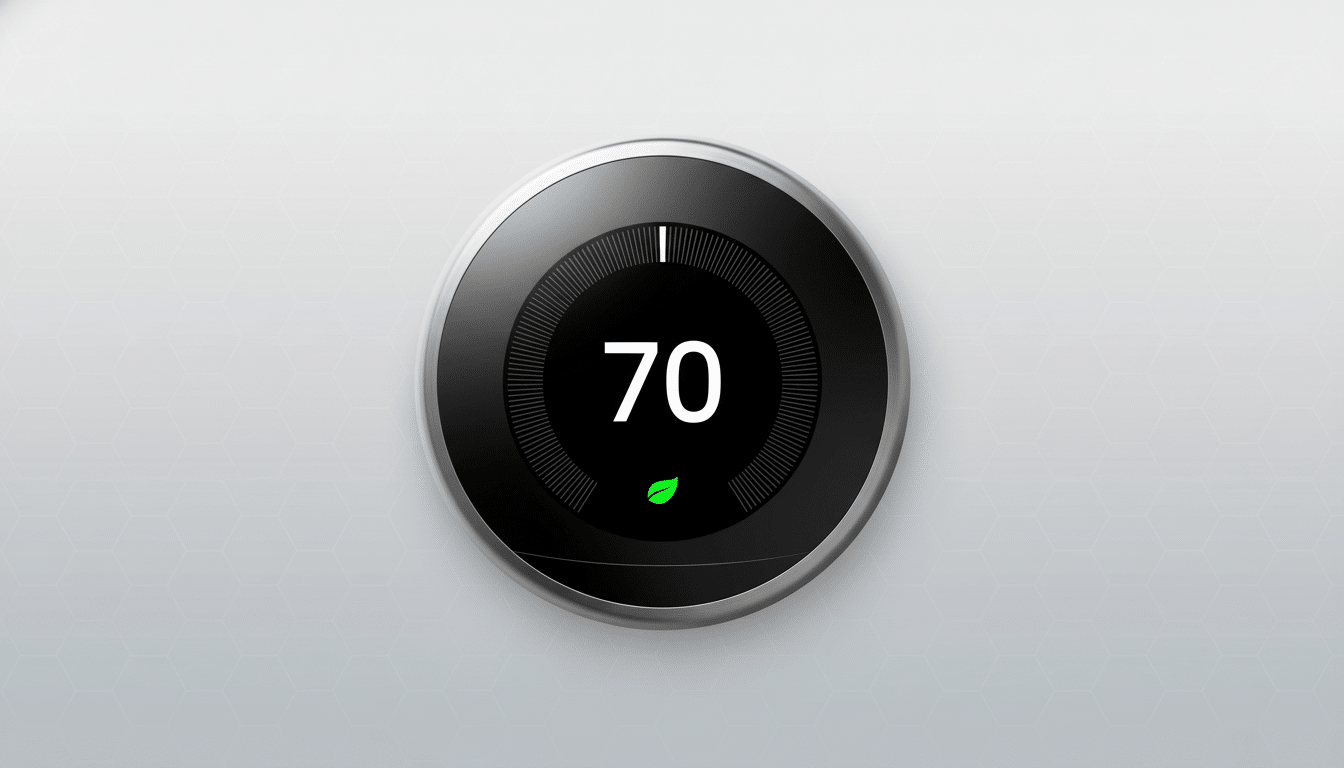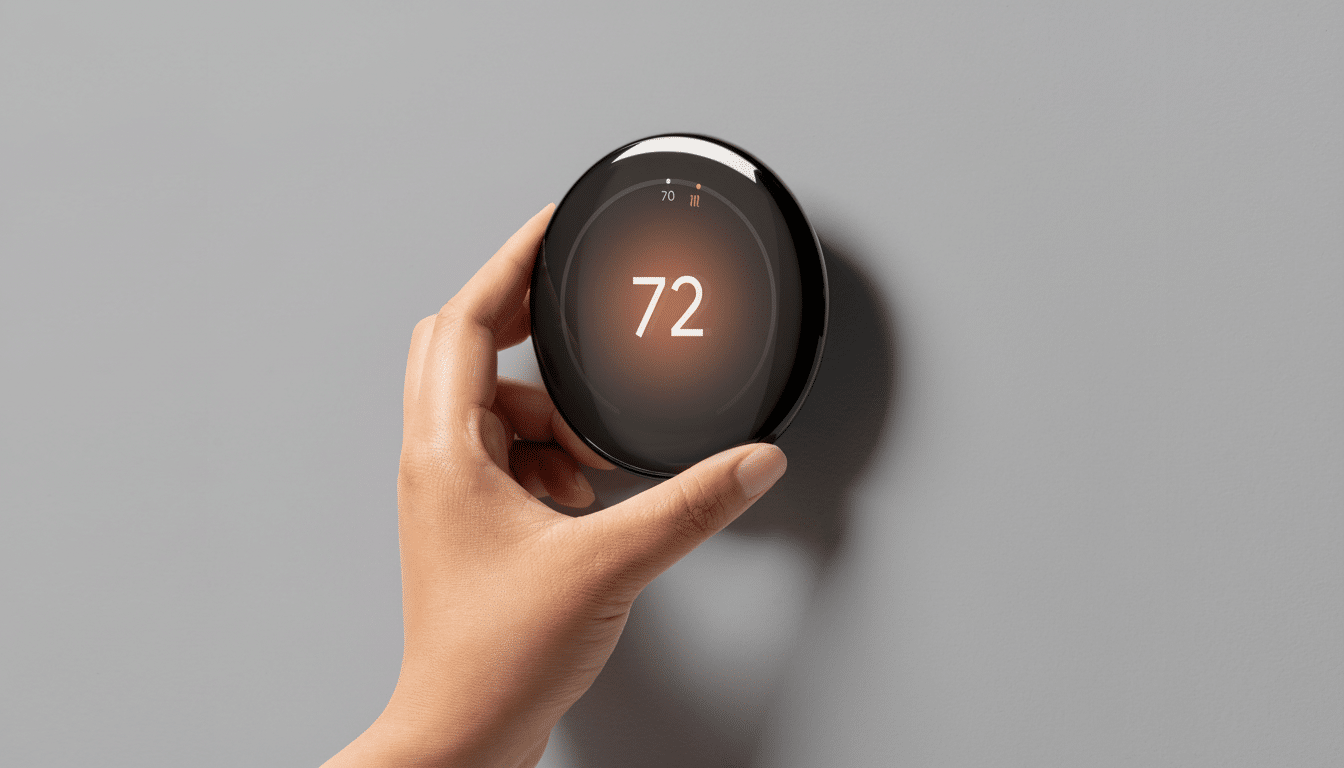A community-built firmware project is giving early Nest Learning Thermostat owners a second chance at remote control and smart features after Google ended cloud support for first- and second-generation models.
The alternative software, developed by computer scientist Cody Kociemba and released under the banner “No Longer Evil,” is in an alpha state but is now available for adventurous users willing to flash their devices and reconnect them to a new, non-Google server.

It’s an unusually fast turnaround for a hobbyist effort, and it speaks to the size of the audience left stranded by end-of-life decisions. Smart thermostats are one of the most popular connected home categories, and when cloud services go dark, the drop-off is intense.
What the firmware does to restore remote features
No Longer Evil replaces the thermostat’s stock software with a custom bootloader and kernel that tell the device to phone home somewhere other than Google.
On the backend, a reverse-engineered reimplementation of the Nest API replicates the original cloud’s behavior, enabling owners to access a web-based dashboard for common tasks such as changing setpoints and modes, pulling up status information, and managing linked equipment.
From the thermostat’s perspective, things are roughly the same. It “thinks” it is reaching out to the mothership it has always known. For the user, the significant variation is that the path for remote access is routed through the No Longer Evil infrastructure.
Kociemba stated that source code for both the firmware and backend is on the way, emphasizing transparency and, in the future, possibly self-hosting. He is also contemplating a mobile app.
Why the end of cloud support for older Nest models matters
The sunset of cloud support for older thermostats is more than an inconvenience; it’s a warning sign about the fragility of connected hardware when critical functionality depends on remote services.
Research from firms like Parks Associates and Statista shows smart thermostat adoption spans tens of millions of households, meaning end-of-life decisions are consequential for energy savings, comfort, and safety.
While this is not the first rodeo the smart home community has faced—when a corporate pivot caused disruption or a platform or hub lost features or shut down—community-led stopgaps and, in some cases, formal revivals under new stewardship have followed. The difference in this case is the rapidity and technical depth of a third-party firmware solution that seeks to restore the core best available capabilities at once.

How it works and what you need to get set up safely
Owners of first- and second-generation Nest Learning Thermostats can follow the project’s steps to flash their devices and pair them with the replacement service:
- Download the firmware and follow the project-provided step-by-step guide to flash the device.
- Connect the thermostat to a computer over USB and run the custom-made boot components.
- Create an account at No Longer Evil and add the thermostat to it to complete pairing.
This is not a one-click upgrade. Users should budget time for setup, confirm they have stable power and a reliable network connection to the device, and understand the recovery steps if something goes wrong. The project is in testing, and the developer is not shy about warning users not to rely on it as the only control path in critical environments. The thermostat can still be controlled via on-device controls, but any remote access and extended smart features rely on the new stack.
Risks, privacy, and warranty considerations for users
Flashing unofficial firmware always carries some danger: one could brick a device with the wrong instructions, and even any remaining warranty might not cover a product that is afterward used.
On the privacy and security fronts, there’s the matter of relying on a third-party service and how at ease one feels until the server and client code are publicly reviewed.
Consumer advocates and digital rights organizations like the Electronic Frontier Foundation have for years argued for repairing digital products and software for prolonged periods of use. Projects like this underline a growing trend: when cloud reliance fails, owners want a neat way to keep hardware products working. If the original firm or a vendor doesn’t offer one, then community engineering does, but it places more of the onus on the user.
Kociemba mentioned that full releases of the firmware and the backend are in production and that there may someday be mobile applications, which might make the experience a lot closer to the original Nest setup. Still, official integrations are impossible. Despite the “No Longer Evil” part, I hope that some people will be enticed into making something like this or other preserved Nest developments since it’s enjoyable to see how individuals work together to do the things they enjoy.
What comes next for the project and legacy Nest owners
Kociemba says that full source releases for the backend and the firmware will soon be made public, allowing for self-hosted servers and more extensive peer review of security procedures. If he or others develop mobile apps, the transition may be closer to the original Nest experience, but it is doubtful that there will be an official connection.
For now, I’d say that No Longer Evil offers a reprieve for old Nest owners who aren’t ready to dispose of perfectly acceptable hardware. The overwhelming conclusion is that the smart home’s original vision is that these things can be useful for as long as possible. Without it, the smart house will fall victim to the whims of third parties. This demonstrates that the smart in the smart home does not have to be erased when a trademarked login no longer operates, and classic thermostats should continue ticking for an extra year thanks to a group technological endeavor.

